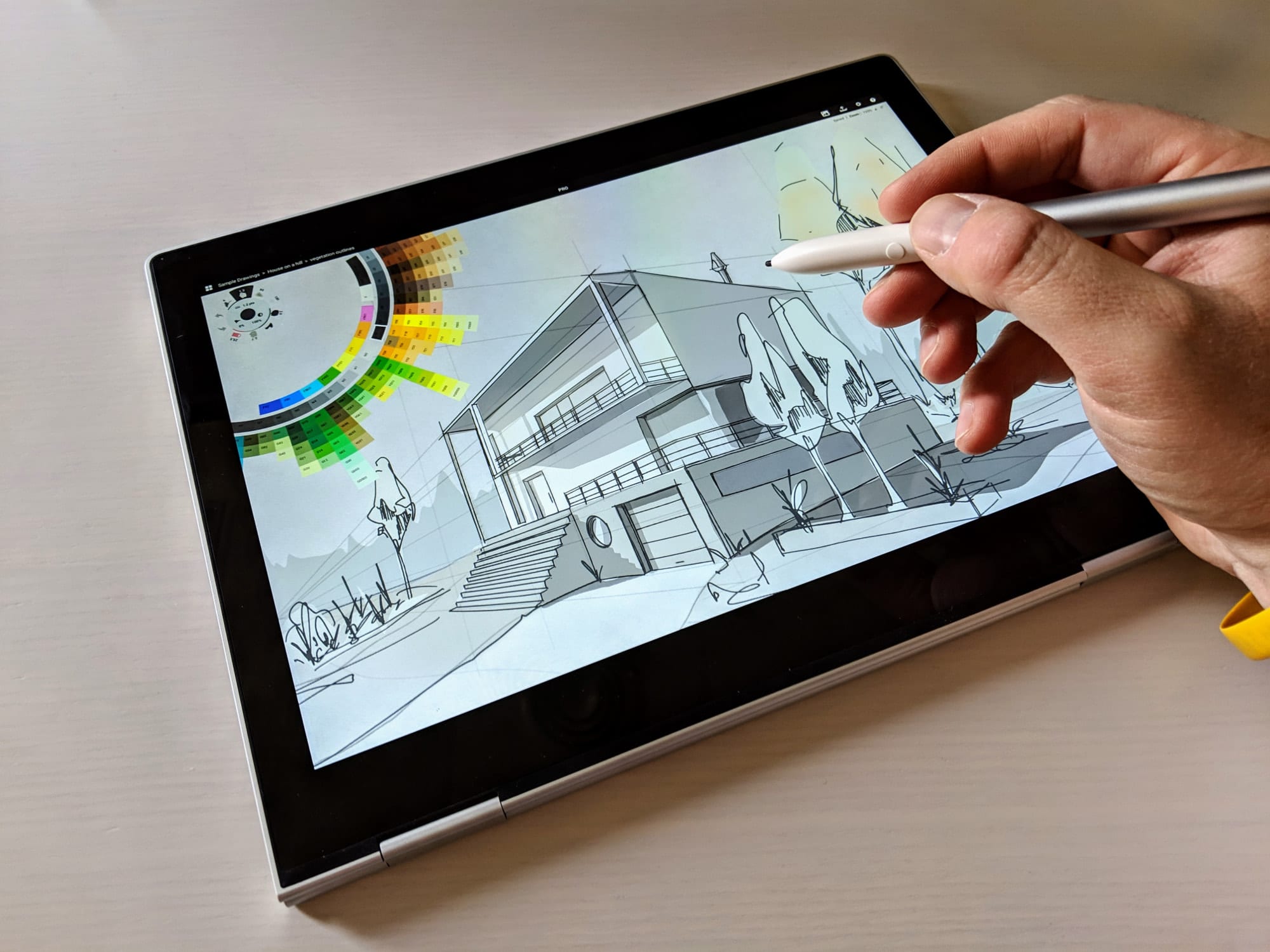
I love drawing and taking notes on my Chromebooks. Whether it’s Google’s new Cursive application, my favorite app of all time, Google Keep, or even something like Artflow Studio, Sketchbook Pro, or Adobe Sketch, I’m addicted to finding the best method for placing my thoughts and creative energy into digital formats without having to rely on paper’s limitations.
Palm rejection refers to the capability of a screen to ignore your hand while you write or draw and instead, to only pick up on the stylus, ensuring a clean, and error-free writing or drawing experience. Sadly, Chromebooks have historically been pretty crap at this, even though several updates have come out in the past few years to rectify this.
The best someone can hope for when performing these actions is to plug in a One by Wacom graphics tablet or to pick up a Samsung Galaxy Chromebook Pro which is a device I’ve had a fantastic experience with for journaling and sketching. I’m still unsure what it is about Samsung’s display, but it’s one of the only Chromebooks I’ve found that has great palm rejection.
Luckily for me, you, and anyone else who considers themselves pensive or creative, a renewed effort in Chrome OS for implementing better system-wide palm rejection seems to be in motion. About Chromebooks just discovered two new developer flags for this called “Neural Palm Rejection Model V2” and “Neural Palm Adaptive Hold”. “Neural” refers to neural networks or artificial intelligence, meaning that your device could become more intelligent when determining what action you’re taking or will take in different circumstances. AI uses predictive algorithms instead of just deciding things based on booleans or if, then statements.
chrome://flags#enable-neural-palm-rejection-model-v2Chromium Gerrit
chrome://flags#enable-neural-palm-adaptive-hold
Found on Chrome OS 99 via the Dev channel, these two flags currently do nothing notable, but they will presumably provide “a new version of neural palm modern (v2)” so that users can get something like a 50% reduction to the overall latency of palm rejection, according to the code change. Right now, it’s been tested on the Samsung Chromebook V2, a popular device for notetaking as it comes with a built-in stylus, but it’s obviously going to become available to many more devices as it develops.
In regards to the Adaptive Hold flag and feature, it’s currently unclear as to what that’s referring to, but if I had to guess, I would say it’s probably in reference to the detection of your palm across the bottom of the screen so that the OS knows you’re not attempting to activate the shelf with your finger swipe gesture. The main problem with the current setup is that placing your palm across the device pulls up your shelf and causes you to open other apps.
It’s super annoying, but if Adaptive Hold detects that you’re “holding” your hand on the screen across a larger surface area (your palm instead of your finger) and for a longer period of time, perhaps it can quickly adapt to ignore the shelf while you draw or write. This is a complete guess, but we’ll keep you posted as we learn more.

Leave a Reply
You must be logged in to post a comment.